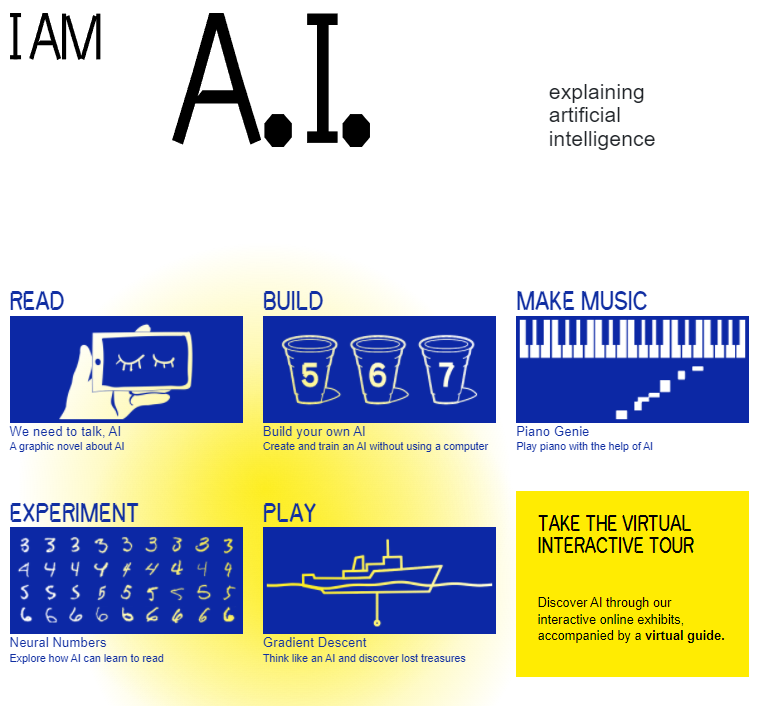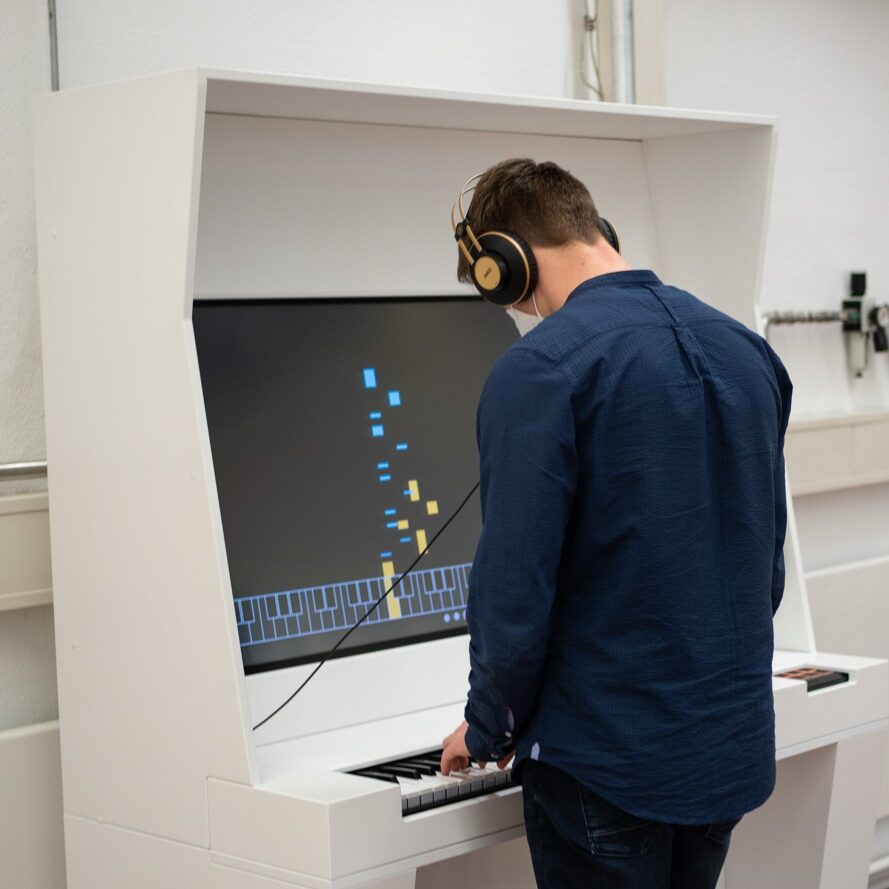There’s a new exhibition in Heidelberg — meet I AM A.I.
BLOG: Heidelberg Laureate Forum

AI is one of the hottest technologies of our time. But how exactly does it work, and what can it do? An exhibition at the MAINS in Heidelberg explores all that — and more.

I AM A.I.
These days, it’s almost impossible to follow the news without hearing something about AI once in a while. But most of the time, we just glance at the story, see the new thing AI has done, and move on. This is where the I AM A.I. exhibition comes in, aiming to offer visitors a better view of what truly goes down within AI, how we can use it, and what are its challenges and limitations.
While we usually just scrape the surface of what AI is and what it can do, I AM A.I. takes a deep, interactive dive into the world of AI.
“The idea is to bring our visitors closer to the foundations of AI, to learn what it’s about, how it is done, what are the mathematical processes, particularly to see that although it may sometimes look almost magical as a blackbox, it’s really relatively simple ingredients being used that are not magic at all,” says Volker Gaibler, coordinator of outreach activities at the MAINS. “Obviously also to let people know what it is capable of, what are the limitations and what topic maybe we don’t want to treat with AI at all (ethically). And then there is the very important field of training data, which should be understandable by all people, even if they’re not interested in the math behind AI.”
The exhibition opened to the public in Heidelberg on January 29, 2022. It features several exhibits, ranging from understanding how an AI thinks and how it can learn to read, to building your own AI. Among others, there are two exhibits about AI and music (how an AI can play along with the user on the piano and another station that makes musical expression better).
The exhibition also dives into another AI hot topic: ethics.
“There are two stations about ethics of AI: ethics of autonomous vehicles, where visitors are confronted with different traffic situations and should check which strategy the AI should take (saving human lives, minimizing insurance costs, protecting people inside the car),” adds Gaibler. “The other one about predictive policing, where an interactive text story raises the question if using AI is an ethics thing to predict crime (and hence amplifying the stereotypes/biases with respect to locations, minorities, etc).”
Moving on from the ethics of AI, one of the coolest parts of the exhibition is getting to understand how neural networks (a subtype of AI) actually work — through several well-thought examples.
“We have several stations dealing with the inner mechanics of neural networks. “Neural numbers” show how hand-written numbers are recognized and how it gets better with more training. “Gradient descent” is very playful and yet shows people a basic method of minimizing the error (during training). “Talk to me” is voice recognition taken apart into separate steps that show a more complex neural network. Then there’s an exhibit showing reinforcement learning, where a robot should try to find its way through a maze.”
Real and virtual
Even if you’re not in Heidelberg, you can take the virtual tour and explore many of these remotely (including some interactive sections). For instance, I had fun seeing that AI can even make sense of my bad handwriting and “read” the numbers I was writing down. But if you’re close enough to see it live, it’s definitely worth a visit.

The exhibition also shows that AI doesn’t always have to be hi-tech. There’s a non-electronic station called “The Turing Game Table” that features a mechanical game with pieces that need to be removed according to certain rules.
“A player on the human side plays against a player on the AI side, and while the human side reads the rules, the AI side only follows strict commands and checks a database book.,” Gaibler explains. “Amazingly, the AI usually wins although it has no clue about the rules and what this is all about. That raises the question: can we be able to do something without understanding it?”
This is, indeed, one of the more intriguing problems about AI: it does things but it doesn’t really understand what it’s doing — and oftentimes, even the AI’s creators don’t know how and why it’s doing what it’s doing. Perhaps the problem is that we’re focused too much on the outcome and the result instead of the process. This is exactly why exhibitions such as this one are so important: they take the visitor on a deep journey into the very core of AI, what it means, and how it can be used. It does all this in an approachable and easy to understand fashion, through interactive examples
“I hope visitors will be fascinated by the various uses of AI and its fascinating capabilities. It’s a wonderful new tool that can be used in so many ways. At the same time, people should learn where it can properly be used and where not (and where maybe it must not be used). As people say, when you have a hammer, everything becomes a nail.”
In addition to learning a bit about the mechanics of AI, visitors are particularly encouraged to critically look at AI and learn to ask the right questions instead of “just believing in it and getting disappointed,” Gaibler emphasizes.
As AI is becoming a more and more integral part of our society, it’s also becoming increasingly important for people to be attuned to what AI is and what it can and can’t do and have a better understanding of it — whether they work in technology or not.
“A lot of discussions are about whether AI can become “conscious” or would eventually rule the world. I think it’s more important to look at the practical AI that is already there and sometimes at places where we don’t expect it (and sometimes can’t be found at places where we might expect it),” Gaibler concludes. “Data collection, analysis, and biases are, in my opinion, very important things that everybody can understand and learn to question. I’m certain that AI will play a more and more important role and hence we all need to learn to appreciate/criticize it without becoming AI architecture experts.”
Have you managed to visit the exhibition or taken the virtual tour? If so, leave your impression in the comments!
The exhibition was created by IMAGINARY and funded by the Carl-Zeiss-Stiftung.


